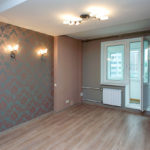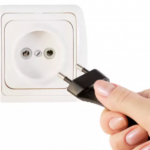Content
- 1 Welding Features
- 2 Inverter cold welding
- 3 Process
Cast iron is found everywhere in everyday life - these are heating batteries, pipes, and much more. You can cook this metal at home, but there are no easy ways. Careful preparation is required, which will exclude the transfer of cast iron and its fragility in the future.

Welding Features
Fine-grained gray cast iron is easier to weld than coarse-grained and dark. This is a limited weldable metal, so the following features should be taken into account for successful cooking:
- The welded position is lower, since the metal is fluid;
- When the metal is quenched and carbon burns out, pores are formed;
- Voltage in welded joints may occur due to non-compliance with the temperature regime;
- Cast iron in the molten state can form oxides, which have a higher melting point.

Inverter cold welding
Cast iron requires careful preparation before welding. First, the place of work is thoroughly cleaned with a grinder to a layer that has not been oxidized. After that, the surface is degreased with alcohol or other suitable composition. If it is planned to weld a crack, then the metal is cleaned to its base, and then a 10 mm deep is made.

Also consider the following:
- The use of studs - they are needed as supporting elements, steel studs are used. Their size should not exceed 40% of the thickness of cast iron;
- Cast iron must be brewed with special electrodes with the addition of chromium, copper, nickel.

Process
The process of cast iron welding involves taking into account the following points:
- Reverse polarity;
- The welding machine is built at minimum power for the selected electrode thickness;
- One continuous seam should be no more than 50 mm;
- In multilayer welding, the first and last layers are additionally forged with a hammer;
- Frequent breaks create overheating of the metal.

First of all, studs are placed on the seam, around which metal is applied layer by layer, which will be welded. You must not allow heating to more than 80 degrees, in order to accomplish this, you must work in a checkerboard pattern or weld each patch in turn from different ends.

At home, cast iron patches can only be done on structures that are not bearing. For work, you will also need mittens, a protective mask and work clothes.



-
 What is bad liquid wallpaper, as well as their advantages
What is bad liquid wallpaper, as well as their advantages
-
 10 rules on how to best repair an apartment for rent
10 rules on how to best repair an apartment for rent
-
 How can you save on heating in a private house
How can you save on heating in a private house
-
 Why does the socket not let in the plug of the appliance?
Why does the socket not let in the plug of the appliance?
-
 Storm sewage: how is it arranged and what are its features?
Storm sewage: how is it arranged and what are its features?
-
 How to beautifully restore windows?
How to beautifully restore windows?
-
 How to update the blind area around the house without dismantling the old
How to update the blind area around the house without dismantling the old
-
 Blowing from a wooden window what to do?
Blowing from a wooden window what to do?
-
 Is it profitable to use gas heating without a gas pipeline
Is it profitable to use gas heating without a gas pipeline
-
 10 subtleties when assembling furniture
10 subtleties when assembling furniture
-
 At what height should not hang a TV in the room
At what height should not hang a TV in the room
-
 When is it better not to glue paper wallpapers?
When is it better not to glue paper wallpapers?
New publications are published daily on our channel in Yandex. Zen
Go to Yandex. Zen


